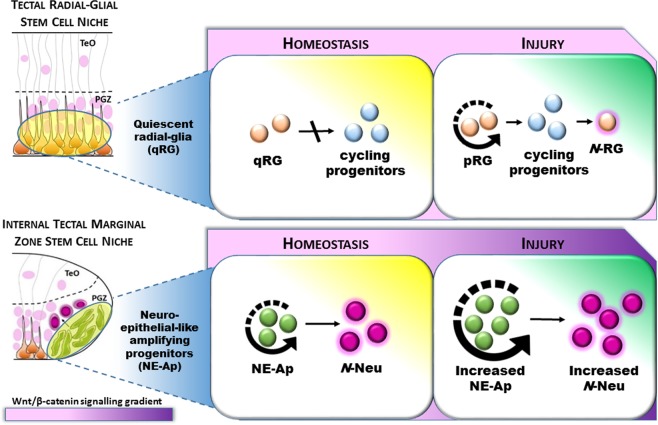Figure 8.
Model displaying the response of niche-specific stem/progenitor populations following lesion to the adult optic tectum. Top: Quiescent radial-glia (qRG) are unable to produce cycling progenitors under homeostasis at the tectal ventricle. Post-injury, a subpopulation of qRG transition to a proliferative state (pRG) to produce newly cycling progenitors which differentiate into de novo radial-glia (N-RG). Bottom: Neuro-epithelial-like amplifying progenitors (NE-Ap) are constitutively active under homeostasis, acting as a lifelong source of newborn neurons (N-Neu) at the internal tectal marginal zone (TMZi). Tectal injury induces NE-Ap to increase their homeostatic level of cell proliferation, leading to an increase in neuronal output to replace neurons lost to damage. This regenerative process is associated with an increase in Wnt/β-catenin signalling. TeO, tectum opticum; PGZ, periventricular grey zone.

